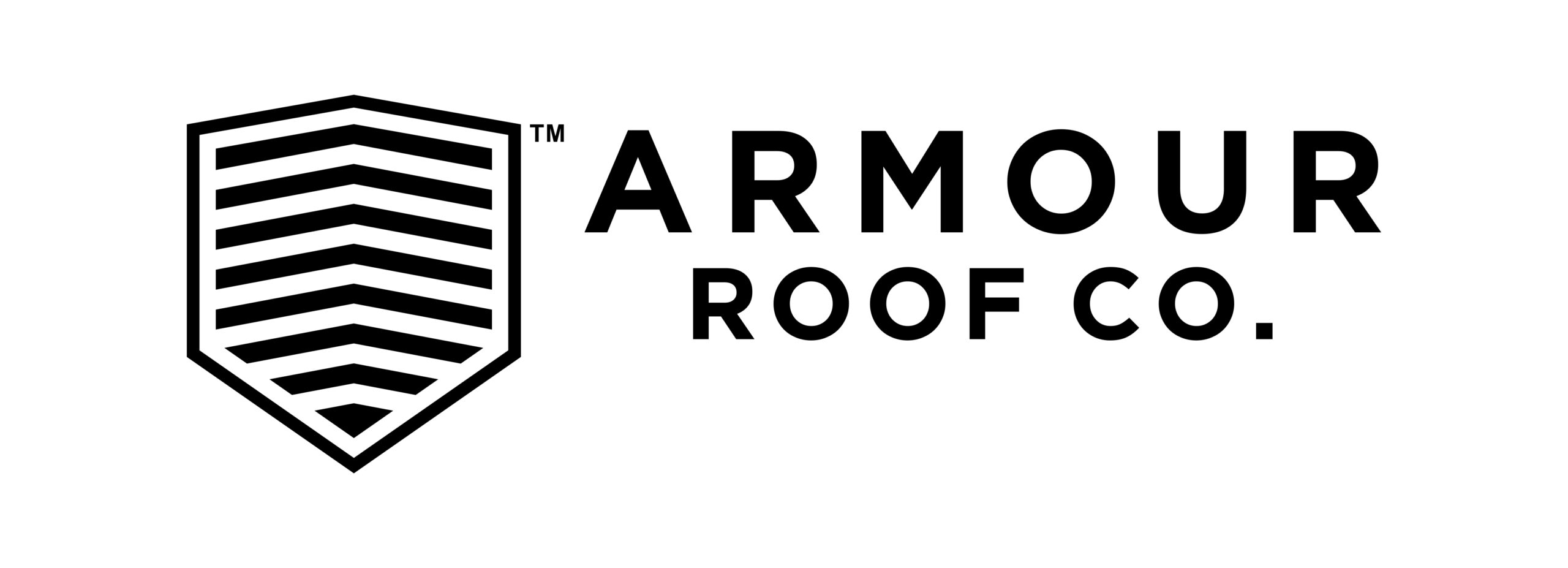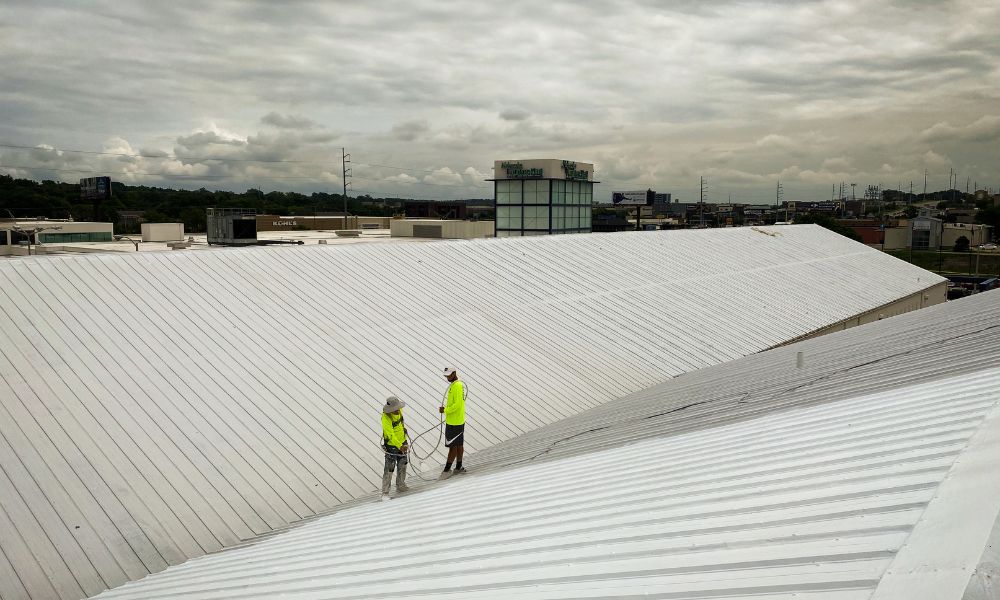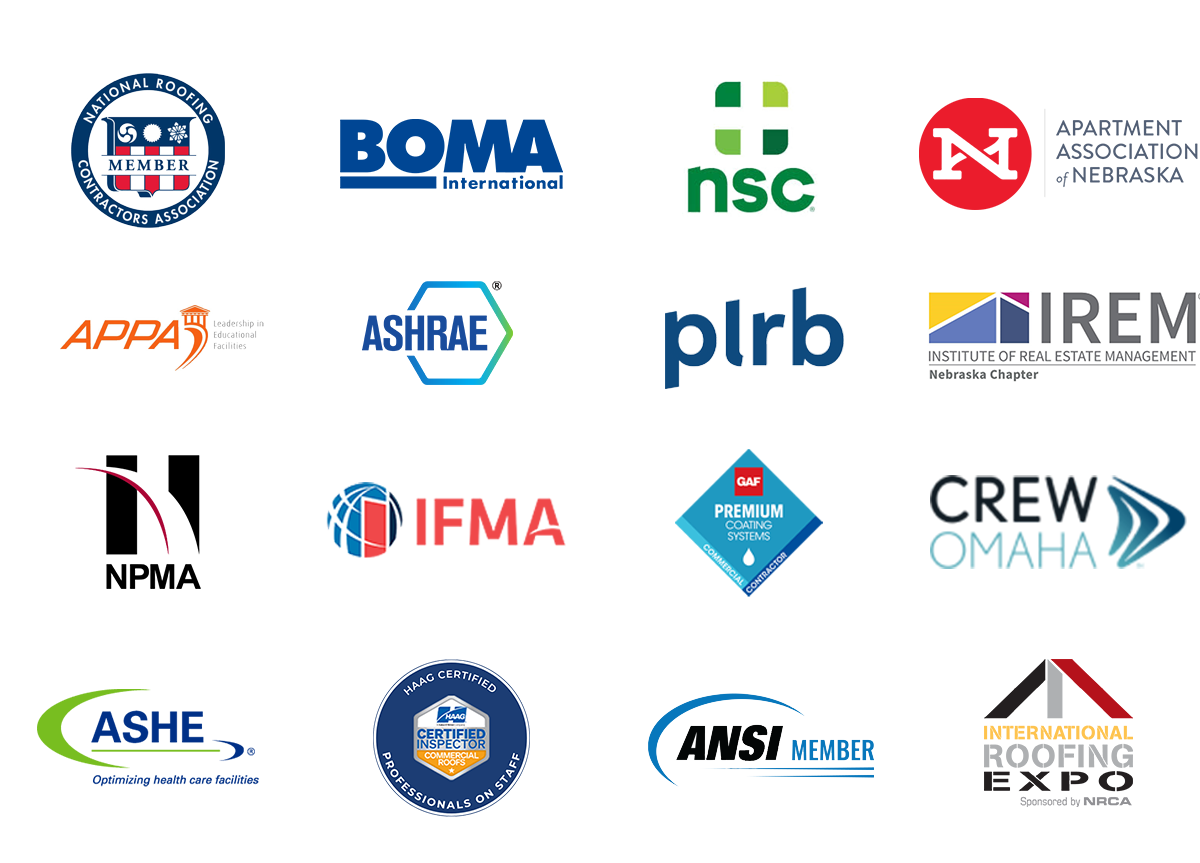Flat roof systems have become a popular choice for roofing solutions for commercial and industrial buildings. Known for their environmentally friendly design, cost-effectiveness, and ease of maintenance, these systems provide practical benefits for building owners.
From low-slope roofs that support HVAC units to durable materials like synthetic rubber or metal panels, flat roof systems are engineered for efficiency and functionality.
Choosing the right commercial flat roofing system is crucial for meeting the unique needs of your building. Factors such as the building’s size, local climate, and intended purpose play a vital role in determining which roofing system will deliver long-term durability and performance.
According to the U.S. Energy Information Administration, as of 2018, there were approximately 5.9 million commercial buildings in the United States, with a total floor area of 97 billion square feet. By 2050, this figure is projected to grow to 124.6 billion square feet.

Source: U.S. Energy Information Administration
With commercial building floor space projected to grow substantially, the demand for reliable and efficient commercial flat roofing systems will only increase. Therefore, building owners must choose roofing solutions that balance durability, energy efficiency, and long-term value.
In this article, we’ll review the most common commercial flat roof types, from traditional built-up roofing to innovative solutions like green roofs and single-ply membranes. Understanding these systems will help you make an informed decision, whether you’re planning a new commercial roofing project or considering a roof replacement.
Common Types of Commercial Flat Roof Systems
Selecting the right commercial flat roofing system is essential for ensuring the long-term functionality and cost-effectiveness of your building’s roof. Various options are available, each tailored to specific needs, from durability and energy efficiency to maintenance requirements.
Let’s explore some of the most common commercial flat roof types, highlighting their unique benefits and applications.
Coatings
Acrylic Coatings
Acrylic Coatings are popular for their affordability, water-based application, and excellent UV resistance. This type of roofing material forms a seamless membrane that protects the flat roof surface from the damaging effects of ultraviolet light and weather exposure. Acrylic coatings are easy to apply and provide a cost-effective solution for prolonging the lifespan of commercial roofing systems.
Silicone Coatings
Silicone coatings offer superior durability and protection against ponding water, making them ideal for low-slope roofs. They are also highly reflective, improving a building’s energy efficiency by reducing cooling costs.
Silicone coatings also resist weathering and temperature fluctuations, ensuring the roof deck remains intact for years. Certain silicone-based coatings have a solar reflectivity value of 0.826, indicating that they can reflect up to 82.6% of the sun’s energy, offering significant cooling benefits.
Built-up Roofing (BUR)
Built-up roofing, or BUR, is a traditional flat roof system composed of multiple layers of roofing felts embedded in hot asphalt, topped with gravel or mineral granules. This construction provides exceptional durability and water resistance, making it a reliable option for commercial and industrial buildings.
However, BUR systems can be labor-intensive to install and are less energy-efficient compared to newer technologies.
Modified Bitumen Roofing (MB)
Modified bitumen roofing systems use asphalt-based materials reinforced with polymers or adhesives. These systems are known for their ease of installation, flexibility, and cost-effectiveness.
MB roofing is available in several application methods, including torch-applied, self-adhered, and cold-applied. This adaptability makes it suitable for a wide range of commercial flat roofing projects.
EPDM (Ethylene Propylene Diene Monomer) Roofing
EPDM roofing, made from a durable synthetic rubber membrane, is prized for its resistance to UV rays, ozone, and temperature fluctuations. This single-ply membrane is lightweight and flexible, making it easy to install on flat roof systems.
Additionally, EPDM is environmentally friendly and suitable for a variety of climates, offering long-term performance for building owners.
TPO (Thermoplastic Polyolefin) Roofing
TPO roofing is a synthetic material known for its high reflectivity, making it an energy-efficient choice for commercial buildings. Its resistance to chemicals, punctures, and weather damage ensures long-term durability.
TPO is lightweight and can be easily installed, providing a seamless and reliable roofing system for modern applications.
PVC (Polyvinyl Chloride) Roofing
PVC roofing systems are made from a rigid membrane, which offers superior chemical resistance, fire resistance, and strength.
This type of roofing system is ideal for buildings requiring high levels of protection, such as industrial facilities. However, PVC roofing can be more expensive than other commercial flat roof types.
Green Roofs
Green roofs are an innovative option that involves growing vegetarian on the roof. These systems provide excellent insulation, improve stormwater management, and enhance building aesthetics.
Green roofs can be categorized as extensive (low-maintenance) or intensive (designed for foot traffic and landscaping).
Depending on the type of growing medium and plant coverage, green roofs can absorb between 50% and 60% of rooftop runoff while intercepting 15% to 90% of total rainfall. Factors such as temperature, wind, and plant uptake significantly impact these absorption rates, making green roofs a sustainable choice for urban commercial and industrial buildings.
Factors to Consider When Choosing a Commercial Flat Roof System
When you’re planning a new roofing project or replacing an existing roof, it’s essential to evaluate several key factors to ensure the chosen solution meets your building’s needs and long-term goals.
Building Size and Complexity
The size and architectural complexity of your commercial building directly influences the type of flat roof system suitable for your needs. Larger structures often benefit from lightweight and flexible materials like EPDM roofing or TPO roofing, which simplify installation and reduce structural strain.
Complex designs with multiple levels or HVAC units may require custom solutions to ensure proper coverage and drainage.
Local Climate and Weather Conditions
Climate plays a significant role in determining the durability and effectiveness of your roofing system. For regions with heavy rainfall or snow, systems like BUR roofing systems or modified bitumen (MB) roofing systems provide excellent water resistance.
In areas with high UV exposure, reflective options such as TPO roofs or silicone coatings are ideal for minimizing heat absorption and enhancing energy efficiency. According to the U.S. Department of Energy, roof coatings like TPO can reduce roof temperatures by up to 50°F.
Budget and Cost Considerations
The cost of materials, installation, and long-term maintenance varies across commercial flat roof types. Affordable options like acrylic coatings or modified bitumen are suitable for businesses with limited budgets.
For those seeking longer-lasting solutions, PVC roofing or green roofs might have higher upfront costs but offer significant savings in energy efficiency and maintenance over time.
Energy Efficiency Requirements
Modern commercial roofing systems often prioritize energy efficiency to meet sustainability goals and reduce operational costs.
Reflective materials such as TPO roofing and silicone coatings are ideal for improving the thermal performance of buildings in warmer climates. Meanwhile, green roofs provide up to 25% natural insulation, reducing energy consumption in all seasons.
Aesthetic Preferences
Buildings’ visual appeal is especially important for certain industries, such as retail or hospitality. Materials like metal roof systems or green roofs offer a sleek, modern look while providing excellent functionality.
Conversely, BUR systems or acrylic coatings may suit industrial facilities where practicality outweighs aesthetics.
Life Expectancy and Maintenance Requirements
The lifespan of a roofing system is a key consideration for building owners. Systems like EPDM and PVC roofing are renowned for their longevity, with lifespans exceeding 20 years with proper maintenance.
Meanwhile, acrylic coatings and BUR systems may require more frequent recoating or repairs to maintain performance.
Expert Commercial Roofing Solutions Begin with Armour Roof Co.
Choosing the right commercial flat roofing system can greatly impact your building’s functionality, energy efficiency, and longevity. With so many options available, it’s essential to match the roofing materials and design with your specific building requirements and operational goals.
Getting a professional opinion from an expert roof inspector is crucial to understanding your requirements and needs and making an informed choice.
At Armour Roof Co., we specialize in delivering tailored roofing solutions that meet the unique needs of your commercial and industrial buildings. Our team of experienced professionals provides expert guidance on selecting and installing the ideal roofing system for your property. From durability to energy efficiency and longevity, we ensure your roof performs at its best, protecting your investment for years.
Schedule an assessment appointment today and let our experts provide you with the right recommendations for your commercial flat roofing system.





